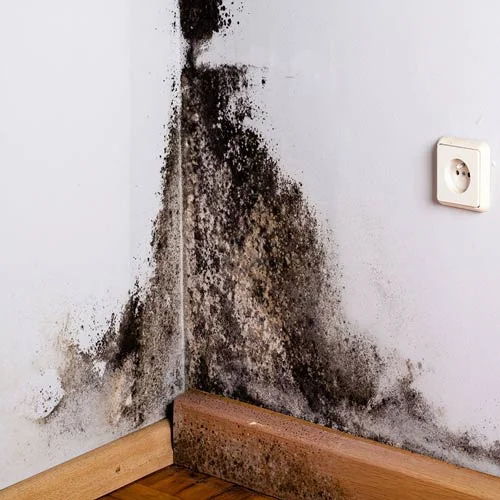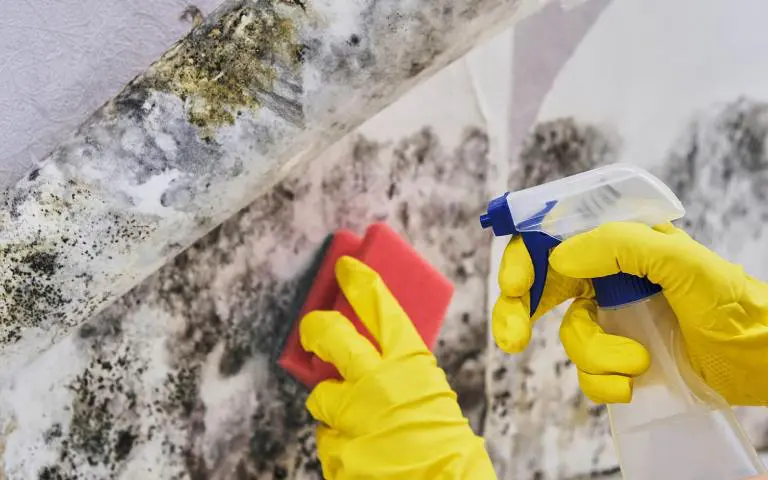What is mold?
Mold is a type of fungus that is usually black in color. Mold grows when there is moisture in an environment with little or no sunlight. Since mold grows best in damp, poorly ventilated areas, it is often found in bathrooms. It is important to note that once it has formed, mold spreads incredibly quickly and can remain undetected. Prolonged exposure to mold can cause health problems, so it is important to remove it before it has a chance to spread.


What is vegetable dye?
Plant rust is a specific type of mold that can come in two forms. Powdery mildew usually appears as yellow spots that quickly turn brown, while the other type appears as white spots that slowly turn dark black. Both occur when the environment has high humidity and poor ventilation.
What causes mold to grow?
Unlike most plants, mold does not need sunlight to grow, which is why it is often found in dark areas. But there are three essential elements for mold to exist and spread: heat, moisture, and organic matter. Where all three are present, you are sure to experience mold growth. Therefore, the best way to reduce the spread of mold is to cut off one or all of these sources.
Cleaning mold from bathroom walls or wet room tiles is never an easy task, no matter how big or small the room is. For this reason, bathroom cleaning is often overlooked, paving the way for mold and mildew growth. While people know that mold growth is or can be a real problem in their spaces, they don’t know how to combat it effectively. Here’s a quick guide on how you can easily remove it.
Proper ventilation
- Rooms that experience excessive humidity should be well ventilated. This can be done by venting or opening a window. The most important room to ventilate is the bathroom. Bathrooms are very humid rooms due to the hot water vapor that flows into your bathroom. This moisture contributes to the growth, development, and spread of mold. Make sure to leave your bathroom vent open for twenty minutes after you finish showering. If you have a window in your bathroom, consider opening it when you shower to let the steam and water vapor escape. Homes that lack adequate air movement provide the perfect conditions for mold to grow, which is another reason why leaving a window open can keep your bathroom (or any room) mold-free.
Skage
- This tip is specifically designed to help prevent mold from growing in your shower. After each shower, use a squeegee to remove excess water and wipe it down from the top of the shower. If you have glass shower doors, be sure to do this on the glass as well.
Delete it (immediately)
- It’s tempting to tell yourself you’ll clean up the spill later. But one of the best ways to protect your tile and grout from mold growth is to clean up spills and spills immediately (and it’s free). Moisture, grease splatters, food particles, and other organic matter that spills on your floor have a chance to penetrate tiled surfaces.
- Cleaning up spills immediately after they occur will eliminate these mold growth triggers from getting the chance to grow and keep your tile much cleaner and mold-free. If your home has a pool, be sure to dry the tiled areas after family and guests return from fun.
Keep wet cloths off the floor.
- The fibers in fabric are the type of organic matter that mold feeds on. Damp clothes and towels quickly develop a musty odor because they provide everything they need to grow. If you leave clothes on the floor, mold can easily transfer to the fabric and then to the tiles. After showering, hang towels properly and keep them off the floor. Also, don’t leave wet clothes and blankets on the tiles; place them in a basket to dry. Carpets are also a forgotten source of moisture. Check entryways and mats periodically to prevent wet carpets from settling and causing mold growth.
Store soaps and creams in a different place.
- Mold needs to eat, just like any other living thing. So, water isn’t the only factor that contributes to mold growth. Soap scum also provides it with food. Remove soap scum from your bathroom by removing, drying, and storing soaps and creams outside of the bathroom. Wipe away any soap residue that remains on the wall or floor tiles.
Cleaning routine
- Cleaning your floors plays a major role in reducing the ability of mold to grow and thrive. Creating a schedule of daily cleaning, weekly deep cleaning, and annual professional service can go a long way in protecting your grout and tile surfaces. Your daily cleaning should remove any soap, grease, dirt, water, and food residue from the tiles. Weekly cleaning should use a safe and effective cleaning agent to deep clean your grout and tile, clear the pores of bacteria that may be harboring in them, and thoroughly clean the surfaces. But to really keep your tile and grout in great shape and free of mold, hire a professional tile cleaning company for an annual cleaning.
Regular sealing
- To prevent water and soap scum from seeping into the pores of your bathroom tiles and grout, have them professionally sealed. By using a sealer, you create a protective barrier on the surface of your tiles. This prevents mold from collecting by keeping out the moisture and organic matter it needs to feed. And mold can’t grow where it doesn’t have moisture or food.
- There are many ways, both natural and chemical, to eliminate mold or mildew problems from inside a bathroom. Since mold is a living organism, the key is to not only eliminate the visible signs of mold formation, but to completely eliminate it and prevent it from returning in the future.
How to clean mold
Vinegar
The most important tips when using vinegar to remove mold are:
1. Use mild white vinegar: Always use this type of vinegar.
2. Do not dilute: Do not dilute vinegar in a spray bottle.
3. Spraying vinegar: Spray vinegar on the damaged surfaces and let it sit for an hour.
4. Ventilate the room: Ventilate the room well.
5. Clean surfaces: Clean surfaces with warm water.
6. Dry: Dry the surfaces with a towel to prevent mold regrowth.
Borax
- You can find borax in the cleaning aisle of your local grocery store, and it has the added benefit of being much cheaper than other mold cleaning alternatives. Mix a cup full of borax with 1 gallon of warm water. Then apply the solution to the affected areas with a brush or scrubbing pad. After cleaning, wipe off the solution and let the areas dry naturally.
Bleach and baking soda
- This is one of the fastest and best ways to clean mold from grout, tile, and walls. Be sure to wear gloves. Mix one part bleach with two parts water and transfer it to a spray bottle. Spray the solution on the affected areas and let it dry.
- Then spray again and scrub with a soft brush. Rinse the area and repeat until the mold is completely gone.
Ammonia
- First of all, never mix ammonia with bleach. The chemical reaction between the two creates dangerous fumes that can be harmful to your health. Ammonia comes in three forms – clear, cloudy, or muddy. Pour the ammonia into a spray bottle and apply to the affected areas in the bathroom. Scrub the areas with a soft brush and let it sit for 2 hours. Ventilate the room during the cleaning process. Wipe off the ammonia after the areas have dried.
Hydrogen peroxide
- Hydrogen peroxide can be purchased in varying strengths. To clean mold from a bathroom, it is best to use a relatively mild 3% hydrogen peroxide solution. You can buy this solution from some supermarkets. The cleaning effect of hydrogen peroxide is reduced in direct light, so pour it into a dark spray bottle. To increase the effectiveness of the solution, add a little vinegar to the spray bottle. Spray the solution directly onto the affected areas and let it sit for 2-3 hours. Ventilate the room while you clean, then clean the surfaces.
Specialized mold sprays
- If you don’t feel like making your own cleaning solutions at home, there are many specialty mold-killing sprays available on the market. Before purchasing any product, be sure to research its effectiveness and read customer reviews to make the right choice. Using an anti-mold spray is recommended, as these sprays are specifically designed for cleaning bathroom tiles and wet environments. Avoid highly abrasive cleaners, as these will remove grout and damage bathroom joints and surfaces.
Grout and caulking
- Grout and caulk around tiles and bathtubs are common breeding grounds for mold and mildew, causing a lot of headaches. When mold has penetrated the grout or grout and caused permanent stains, the previous methods may not work. In these cases, if all else fails, you may need to replace the grout or caulk.
- To remove grout between bathroom tiles, you will need a grout remover, an old sponge, a paint brush, a diluted bleach solution, new grout, and gloves. With these tools, you can easily remove the old grout and leave your bathroom clean and mold-free.

